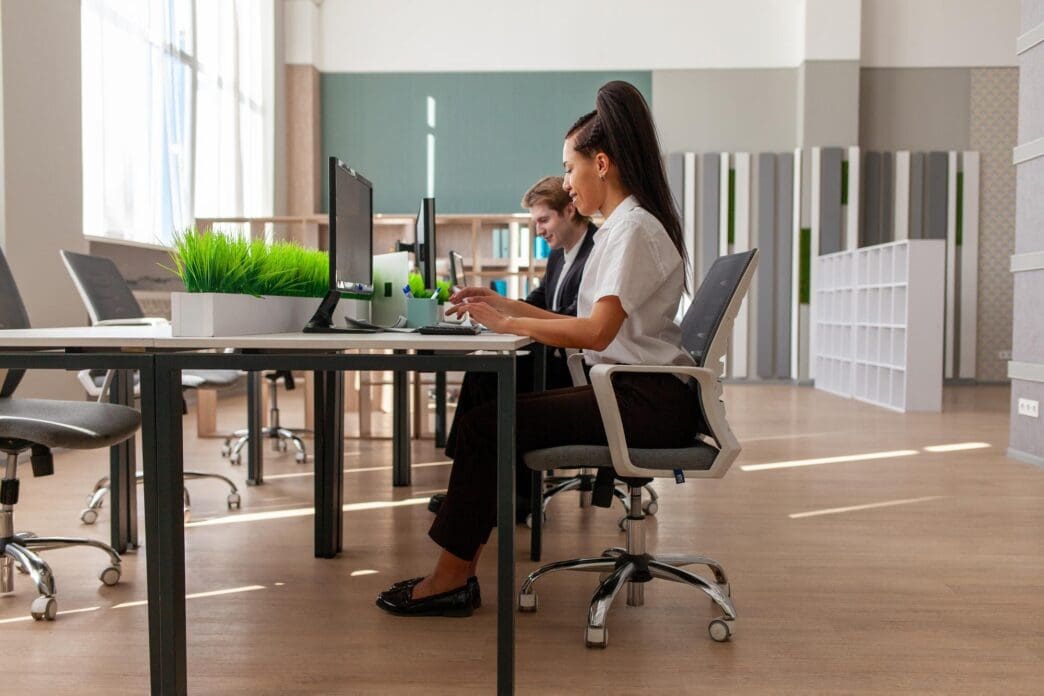A Quick Takeaway
The Story Behind the Trend
How to Make It Work for You
The Community View
Standing desks, also known as sit-stand desks or height-adjustable workstations, are dynamic furniture pieces designed to allow individuals to seamlessly alternate between sitting and standing while working. These innovative desks are gaining significant traction among professionals, remote workers, and health-conscious individuals who recognize the detrimental effects of prolonged sedentary behavior. From corporate offices to vibrant co-working spaces and home setups, particularly within the wellness-oriented community of Miami Beach, these desks are being adopted as a proactive measure to improve physical health, enhance mental focus, and ultimately boost overall productivity in an increasingly demanding work landscape.
The Sedentary Trap: Why Standing Desks Matter
Modern work culture has, for decades, predominantly involved prolonged periods of sitting, a habit that is now widely recognized as a significant health risk. Research consistently links excessive sitting to an increased risk of chronic conditions such as obesity, type 2 diabetes, cardiovascular disease, and certain cancers. This “sitting disease” has prompted a re-evaluation of traditional office ergonomics and a push towards more active work environments.
Standing desks offer a straightforward solution to combat this sedentary trap by encouraging movement and reducing the static nature of work. By allowing users to switch positions throughout the day, these desks help to break up long periods of inactivity, promoting better circulation and muscle engagement. This simple change can have profound effects on both immediate well-being and long-term health outcomes.
Health Benefits Beyond the Hype
While often marketed for productivity, the primary and most well-documented benefits of standing desks are rooted in physical health. Reducing sitting time is crucial for metabolic health. Studies indicate that standing burns more calories than sitting, albeit a modest amount, which can contribute to weight management over time.
Furthermore, standing can significantly alleviate back and neck pain, common complaints among office workers. Maintaining an upright posture engages core muscles and distributes body weight more evenly, reducing pressure on the spine. Improved posture also contributes to better breathing and reduced tension in the shoulders and neck.
Beyond caloric expenditure and pain relief, regular standing can improve blood sugar levels, especially after meals, and may lower the risk of heart disease. These cumulative health advantages underscore the value of integrating standing into daily work routines, transforming the workspace into a tool for proactive health management.
Unlocking Productivity: Focus, Energy, and Mood
The link between standing desks and enhanced productivity is a key driver for their adoption in dynamic work hubs like Miami Beach. While direct productivity gains can be subjective and vary by individual, many users report tangible improvements in their work performance and overall well-being. The act of standing itself can provide a subtle energy boost, counteracting the sluggishness often associated with prolonged sitting.
Improved circulation, a direct result of standing, means more oxygen reaches the brain, potentially leading to clearer thinking and enhanced cognitive function. Users often experience increased alertness and a reduction in mental fatigue, allowing for sustained focus on tasks. This heightened state of engagement can translate into better decision-making and more efficient task completion.
Moreover, the physical benefits of standing—such as reduced discomfort and increased energy—contribute to a more positive mood. When employees feel better physically, they are generally more engaged, motivated, and less prone to stress, all factors that indirectly but significantly impact productivity and job satisfaction.
Ergonomics and Optimal Usage
To truly reap the benefits, proper ergonomic setup and usage are paramount. A standing desk should be adjusted so that the top of your monitor is at eye level, and your arms form a 90-degree angle at the elbows when typing, with wrists straight. Your feet should be flat on the floor or an anti-fatigue mat, which is highly recommended to reduce strain on the feet and legs during standing periods.
The key is not to stand all day, but to alternate between sitting and standing. Experts recommend a ratio of approximately 1:1 or 2:1, meaning for every 30-60 minutes of sitting, you should stand for 15-30 minutes. This dynamic approach prevents fatigue and discomfort that can arise from standing too long and ensures a balanced posture throughout the workday. Integrating short walks or stretches during transitions can further amplify the benefits.
The Miami Beach Context: Wellness Meets Work
Miami Beach, known for its vibrant lifestyle, emphasis on fitness, and a growing influx of tech and creative industries, provides a unique backdrop for the standing desk phenomenon. The city’s culture often prioritizes health and wellness, with residents embracing outdoor activities and a proactive approach to well-being. This ethos naturally extends to the workplace, where companies and individuals are increasingly seeking ways to integrate healthy habits into their daily routines.
In Miami Beach’s evolving professional landscape, where innovation and employee well-being are valued, standing desks align perfectly with the desire for a more active and health-conscious work environment. Startups, design firms, and co-working spaces across the area are often at the forefront of adopting modern office solutions that support employee health and engagement. For many in Miami Beach, a standing desk isn’t just a piece of furniture; it’s an extension of a lifestyle committed to staying active and feeling good, even while tackling demanding professional responsibilities.
Making the Transition and Maximizing Impact
Transitioning to a standing desk requires a gradual approach. Begin with short standing intervals, perhaps 15-30 minutes at a time, gradually increasing the duration as your body adjusts. Listen to your body and alternate positions frequently to avoid discomfort. Investing in a good anti-fatigue mat and comfortable shoes can significantly improve the experience.
Beyond the desk itself, integrate other movement strategies throughout your day. Take short breaks to walk around, stretch, or even do a few squats. Hydrate regularly and ensure your workstation is set up ergonomically, whether you are sitting or standing. The goal is to create a dynamic work environment that prioritizes movement and well-being, rather than simply replacing one static posture with another.







